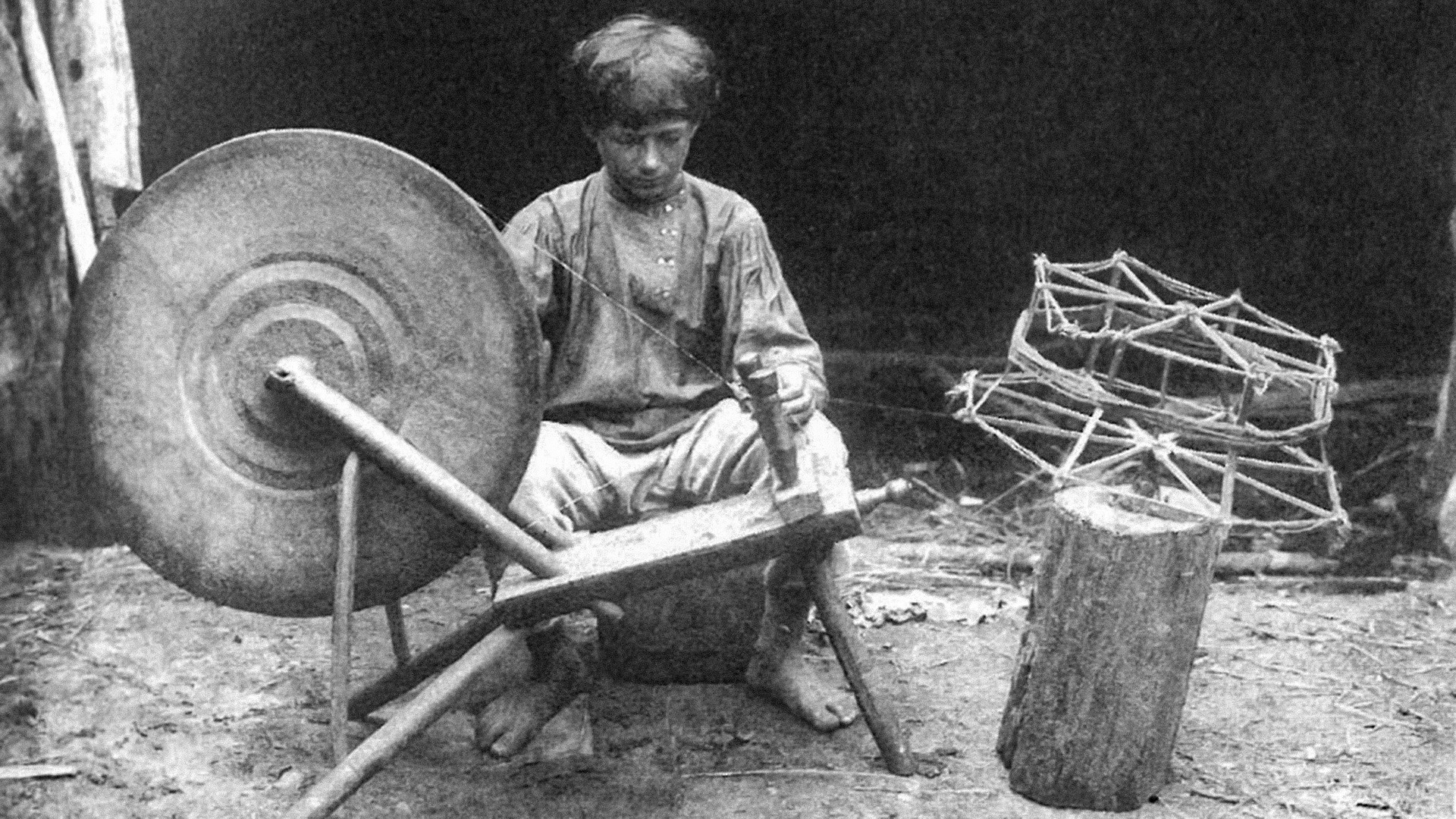
One of the most in-demand crafts was the production of wooden spoons. Incidentally, spoons were used not only as cutlery. Read more about Russian spoon customs here.
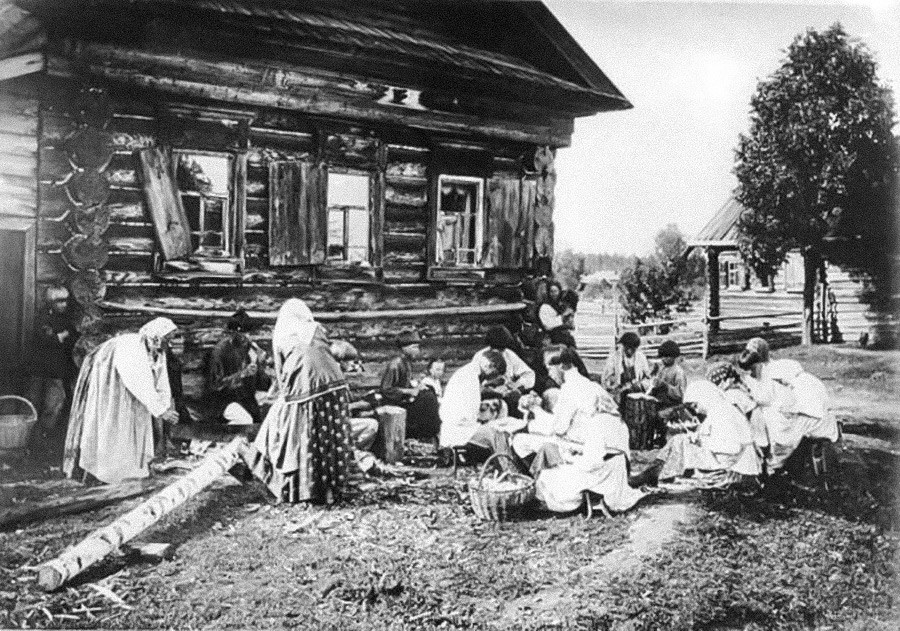
Nizhny Novgorod artisans, 1897
MAMM/MDFMeanwhile, the town of Pavlovo in Nizhny Novgorod Region was famous for its master metalworkers. They made locks, knives, and trays, like in this photo from the 1900s.
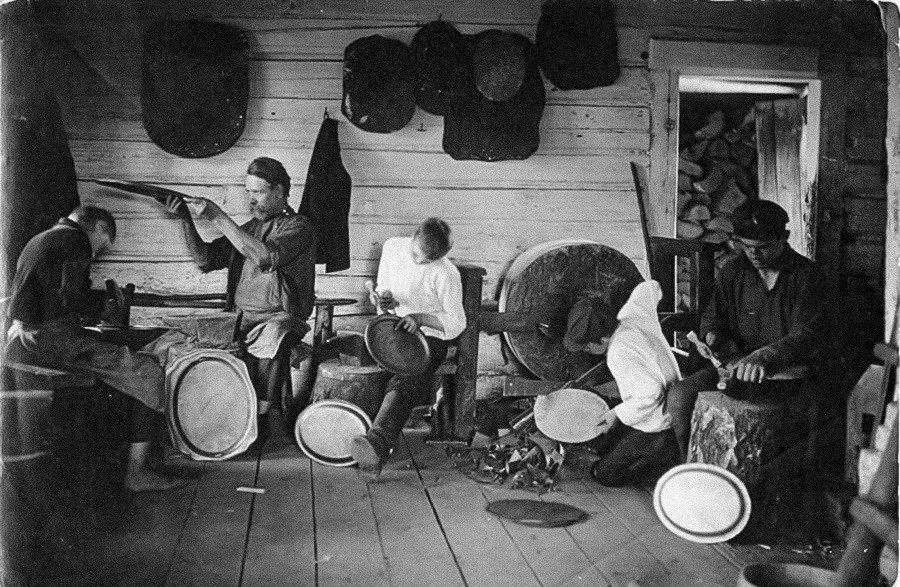
Pavlovo metalworkers making trays
Pavlovsk Historical Museum/russiainphoto.ruIn places where the land was infertile, peasants increasingly switched from agriculture to handicrafts, because they were more profitable and required less effort.
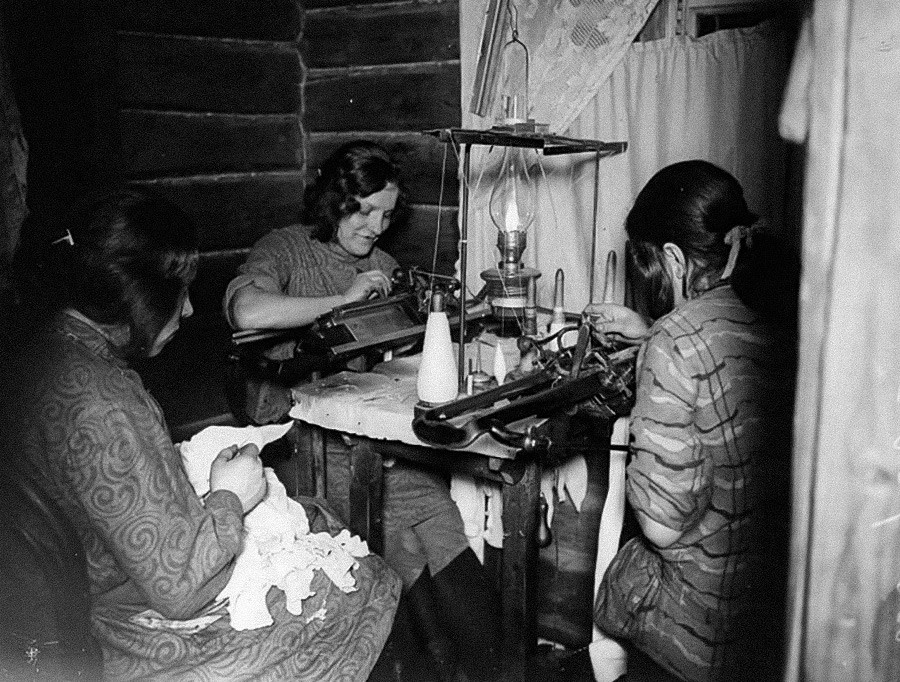
Zvenigorod women work on knitting machines, 1918.
MAMM/MDFShoemakers working in the street with simplified tools and materials were known as “cold cobblers”; this expression was also applied to slipshod workers.
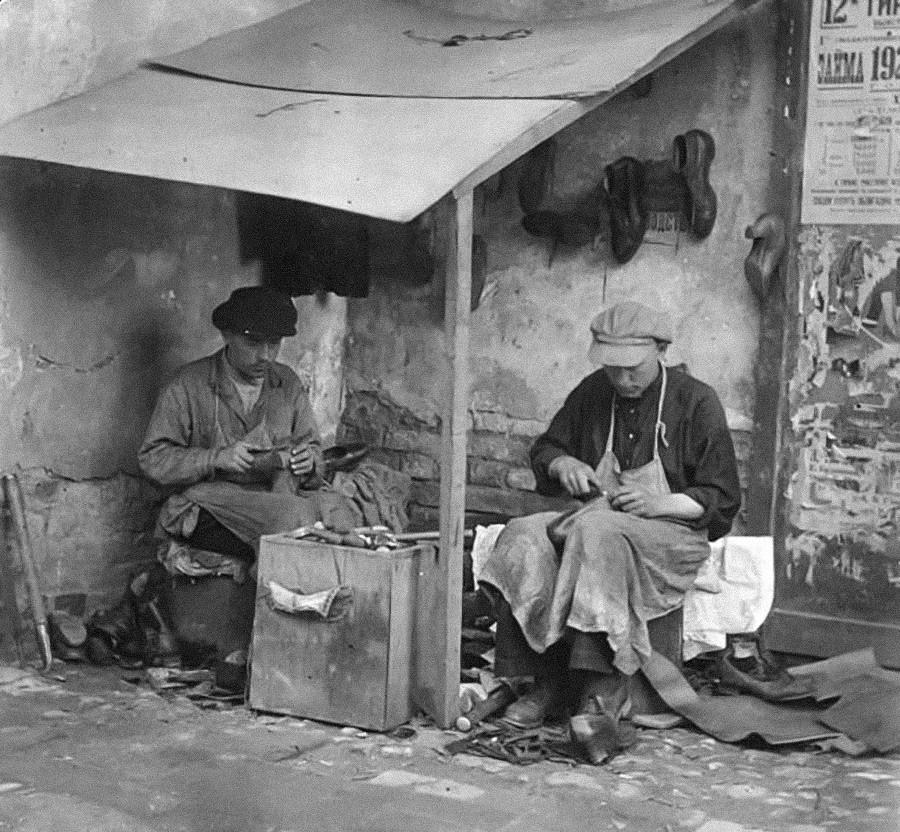
Kimry, Tver Region, 1920s
Leonid Shokin/MAMM/MDFA more professional shoemaker with his own workshop looked like this. Naturally, their services were pricier.
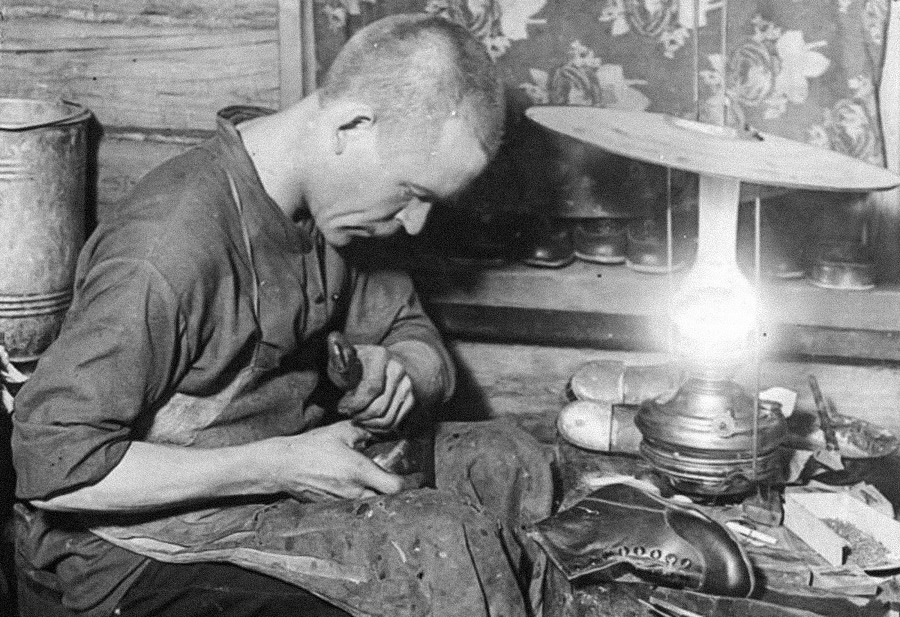
A shoemaker, 1930s
Leonid Shokin/MAMM/MDFThe very best artisans had apprentices. For children from indigent families, such a position was like gold dust.
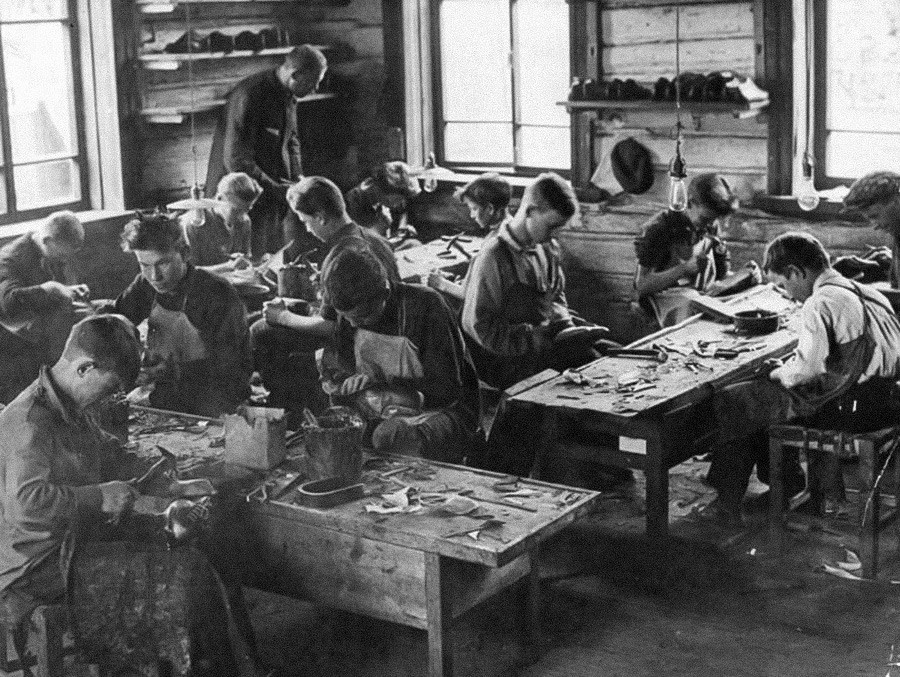
Shoemaking workshop, 1930s
Leonid Shokin/MAMM/MDFAnother common craft was the manufacture of felt boots, which were the most popular footwear during the Russian winter.
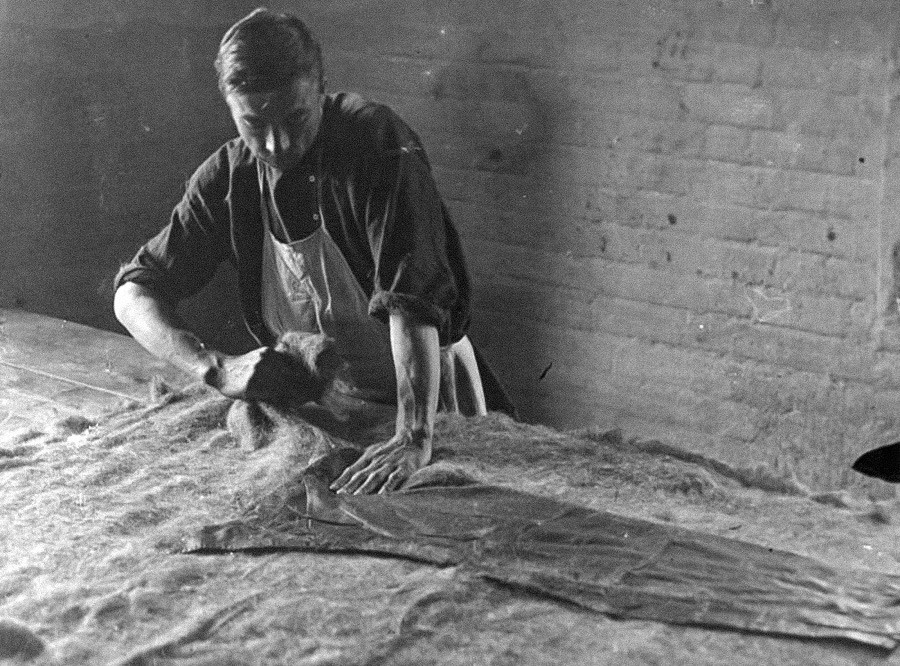
The first stage of production — preparing the felt, 1930
Leonid Shokin/MAMM/MDFThe most important stage was the actual felting of the boots-to-be.

The craftsman softened up the workpiece, making it easier to shape and texturize.
Leonid Shokin/MAMM/MDF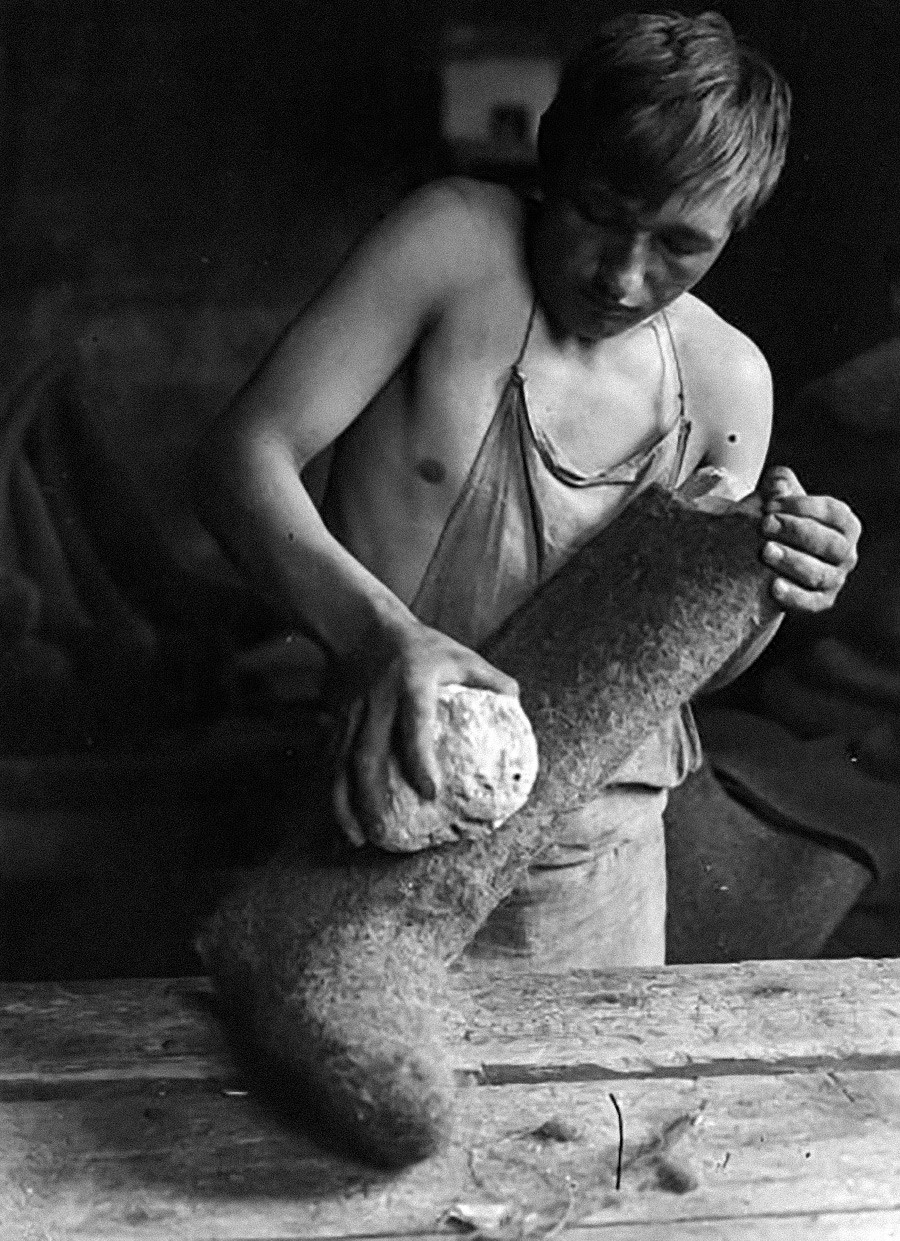
The final stage was pumice processing
Leonid Shokin/MAMM/MDFNo Russian bazaar was complete without items woven from birch bark or the roots of other trees, such as willow. The most famous handmade articles — bast shoes — went the way of the dodo, but baskets are still very popular to this day.
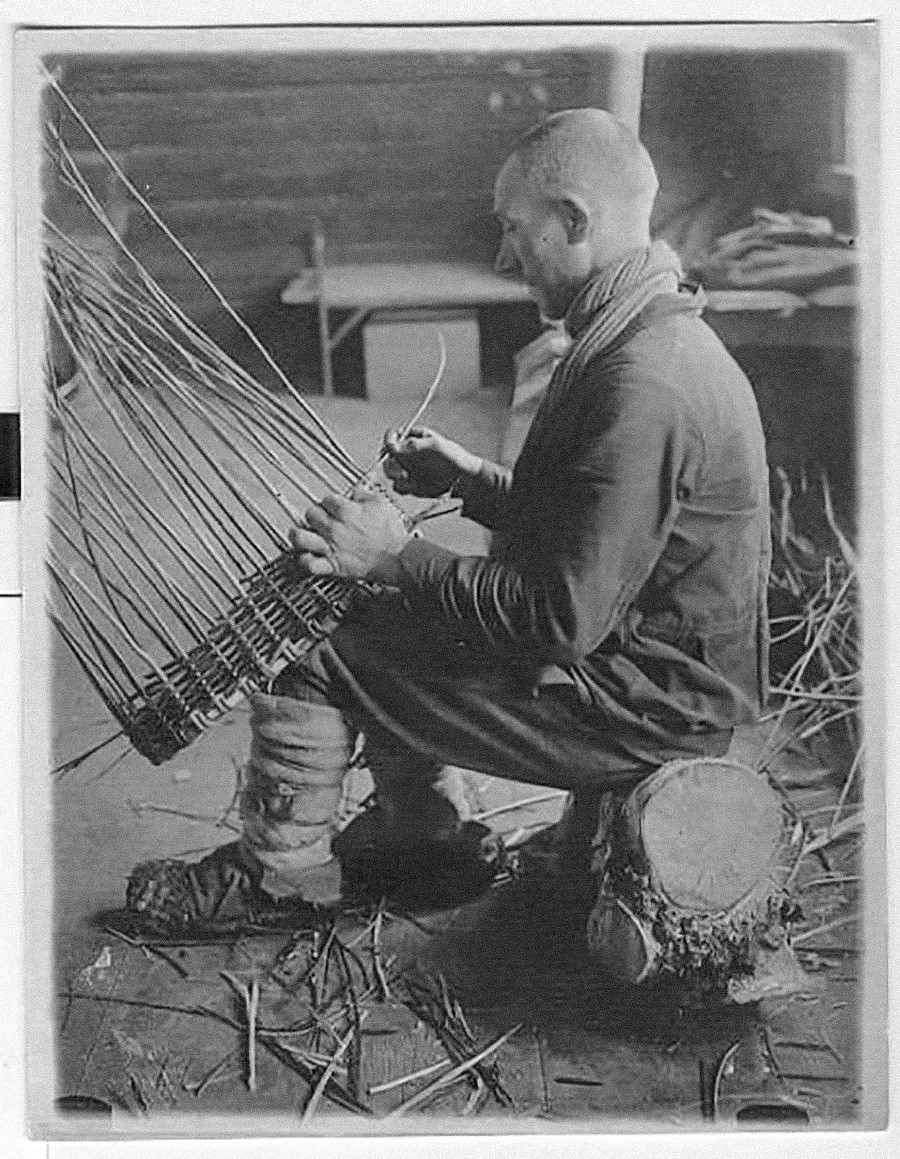
Basket weaving, 1930s.
MAMM/MDFIn the USSR, many production works gradually became industrialized, yet in some villages handworkers hung on for a long time.
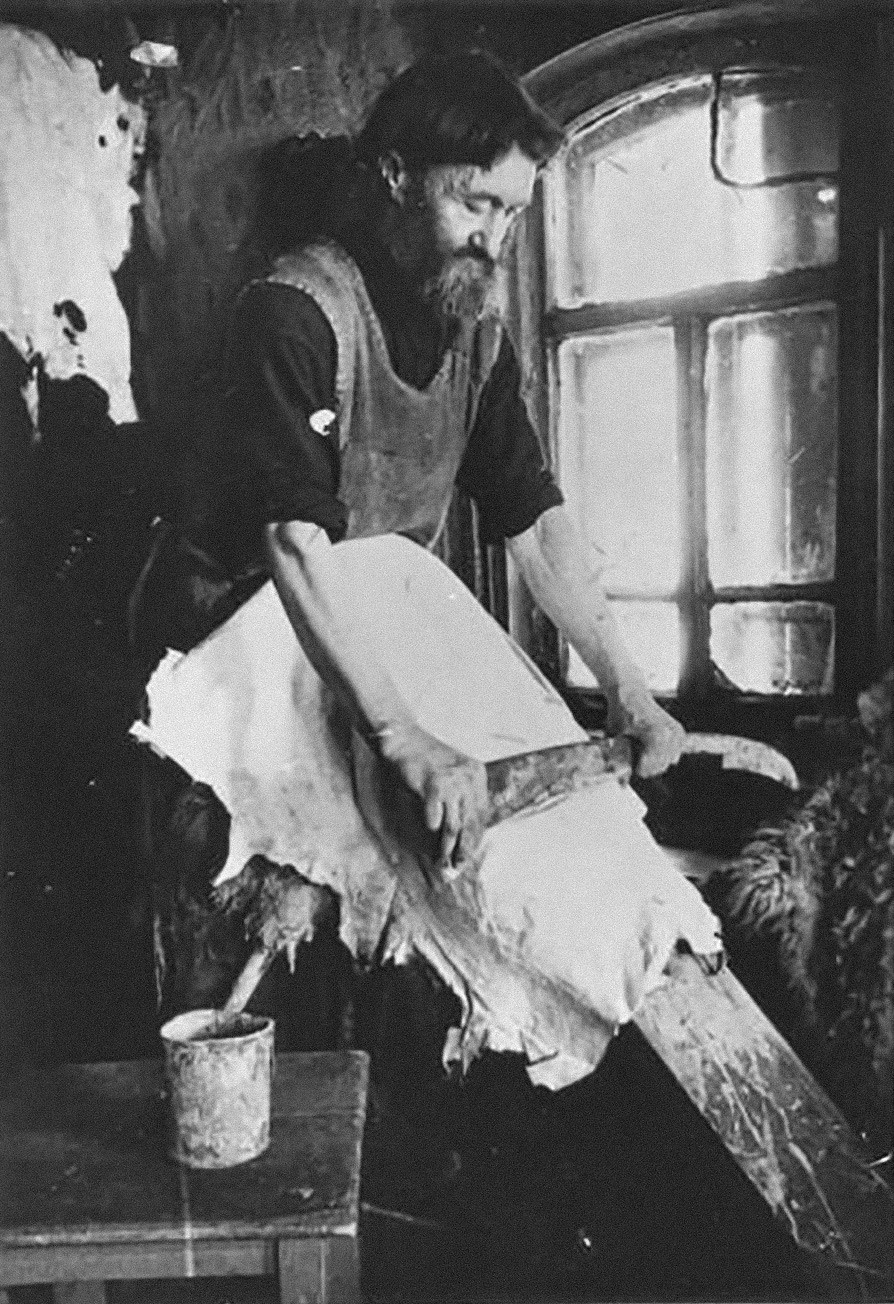
A peasant makes a sheepskin for warm coats for Red Army soldiers, 1941
MAMM/MDFIf using any of Russia Beyond's content, partly or in full, always provide an active hyperlink to the original material.
Subscribe
to our newsletter!
Get the week's best stories straight to your inbox